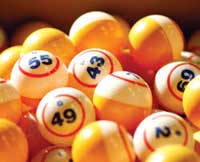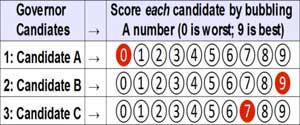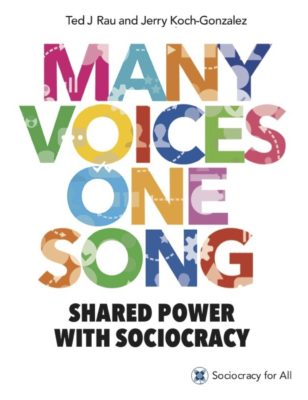
Bingo balls which represent how many people feel about voting. It doesn’t matter what they think.
Because our Council Member, Muriel Bowser, was elected mayor, Ward 4 in Washington DC is having an election to replace her. There are so many candidates, eight at last count?, that knowing who would be the best representative is very hard. My neighbors are speaking on behalf of almost all of them. With so many votes splintered, unless some drop out in the remaining 3 days, there is likely to be a run-off election with no representation until it is resolved.
This is the perfect situation for using one of the several systems is preferential voting. The two that are most familiar are Instant-Runoff and Range Voting. Preferential voting is gaining ground in many governments and other organizationsThe Delibrative Democracy Consortium (DDC)u is an alliance o... globally. It is even discussed in the 10th revision of Robert’s Rules of Order as preferable to a plurality.
Why is preferential voting sometimes better?
The primary form of decision-making in sociocracy is consent, meaning no objections. Reaching a consensus as a voting threshold is impractical in large diverse groups, in groups that do not share a common aim, or are not willing or able to sit together long enough to resolve objections.
If sociocratic values, principles, and methods are to move into the public arena, alternative methods of decision-making will need to be adopted. Of the choices, I think Preferential Voting is the closest to a middle ground between consent and majority vote.
To insist on consent as a foundation for civic decisions, even to insist on consent to another system of voting, will certainly be self-defeating unless people change dramatically.
Instant runoff voting
Instant Runoff Voting (IRV) is the most widely used form of preferential voting. With variations, Instant Runoff is used globally for government elections, in political parties, the awarding of prizes and awards, etc. In India it is used by the parliament for the election of the president, in the Czech Republic to elect the leaders of the Green Party, in New Zealand to elect mayors, and in the United Kingdom by the Labour Party and the Liberal Democrats to elect their leaders.
The instant runoff process:
A rather conventional ballot includes all the candidates names and the process is similar to runoff elections.
- All the candidates are ranked by each voter — 1st choice, 2nd choice, etc.
- The ballots are counted and the candidate with fewest 1st choice rankings is eliminated.
- The 2nd choice on the ballots for the eliminated candidate are counted and the votes added to the 1st choice of the other ballots.
- These rounds are repeated until one candidate has a specified majority of the #1 + #2 + #3, etc. rankings.
Instant Runoff avoids the expense and delay of runoffs in separate elections and also ensures that everyone’s vote counts. Otherwise, only the votes for the most popular candidate would count.
Instant Runoff voting is supported online by Fair Vote: The Center for Voting and Democracy,Instant Runoff, Accurate Democracy, and many others.
Range Voting or “Five Stars”
Range Voting is the newest system of Preferential Voting and many consider it the best in representing the preferences of the voters. The most familiar uses are in film and restaurant reviews that use five stars. More than one option can be rated as 5-stars. In Olympics-level ice skating, the range is 10 points, expressed in decimals allowing more subtle distinctions.
In normal use of Range Voting, each voter uses a range of points, usually 5 or 10 to rate each option. This avoids a forced choice of yes/no or ranking candidates as 1st, 2nd, 3rd, etc. A voter can rate more than one candidate as deserving the highest number of points, or rate all of them as deserving the lowest. It isn’t either/or.
When more than one candidate is acceptable, this is clear in range voting when it isn’t in other voting systems.
The process in Range Voting:
- Ballots include the names of all candidates and a specified method of marking the rating — circling stars or numbers, etc.
- Each voter rates each candidate individually according to their preference for each candidate.
- The points given to each candidate are added, and usually divided by the number of people voting.
Averaging the number of points awarded expresses the result in the same range of points that were used in ratings. With a range of 1-10, averaging the total will record the vote within the range of 1-10.
Range voting is advocated online by the election reform sites RangeVote.com, The Center for Election Science, and the Center for Range Voting. Guy Ottewell, who helped develop the system of approval voting, now endorses range voting.
Beyond determining the majority’s top choice
Preference voting can do much more than determine the top choice. It can also:
- Show the level of support for each candidate in more nuanced terms than 1,2,3,4 or just 1 and none
- Allow a ballot to be counted no matter what the vote
- Elect a candidate that is the 2nd or 3rd choice of more people rather than the first choice of a few.
In range voting, for example, if 1000 people are voting and 400 vote for Mary as the first choice, that means 600 preferred someone else. If the second choice of many people was also Mary, Mary will be elected with a clear majority.
But if Mary was the first choice of 400 and she wasn’t even 2nd or 3rd on other ballots, she is less likely to be elected. If 600 people have voted for Nancy as their second choice, Nancy will win and in the end have more support because many of the people who voted for Mary as their first choice are likely to have voted fro Nancy as their second too.
Similarly in Range Voting, Mary might receive 5 stars from 400 voters but only 1 or 2 stars from 600. Mary is unlikely to win if Nancy also receives many 5 stars and many 3 and 4 stars.
By allowing a range of choices to be recorded, the result is more representative of the groups’ preferences and likely to be more satisfying.
A sociocratic democracy
The reason I like preference voting when consent isn’t possible is that it produces a decision as quickly as majority vote but it also represents the voters better. It can also eliminate the need to limit the number of political parties and candidates to ensure a clear majority. Perhaps most importantly, it gives those constituencies that are not in the majority a chance to influence an election.d
Range voting also gives more nuanced results — even when there are only two options. If a 5 star system is used for a choice between two options, and no one gives either of the candidates more than 2 or 3 stars, it indicates a weakness in that person’s ability to govern or the quality of their award.
In many democracies, particularly those over 100 years old, only a relatively small number vote. Often this is because eligible voters believe the candidates have been predetermined by the political parties or the establishment government. Or they know their candidate will never win even in an open election—why bother?
In preference voting, something other than support for the majority can be recorded and even influence an election. Even if a voter doesn’t like any of the options, their preference will be recorded. When dissatisfaction or lukewarm support can be measured, the majority will no longer be the majority. Candidates and political parties will be more likely to pay attention, and new candidates may be encouraged to join in the next election.
Because it would include more voters and allow greater expression of objections, using Preferential Voting would bring us closer to a deeper democracy — a sociocratic democracy
Categories: In Civic Life

